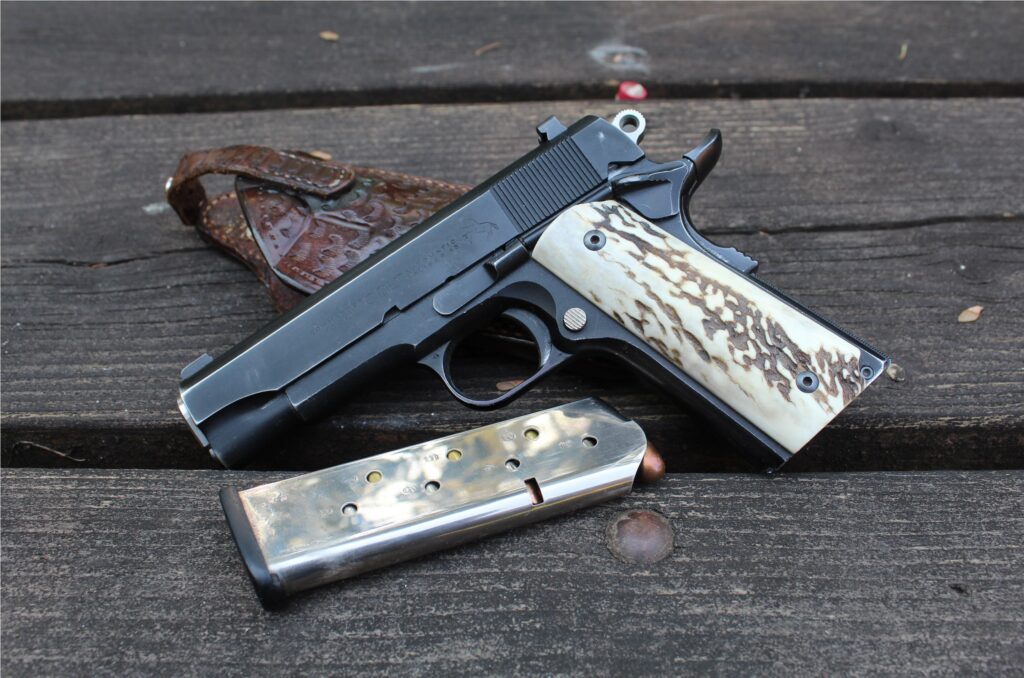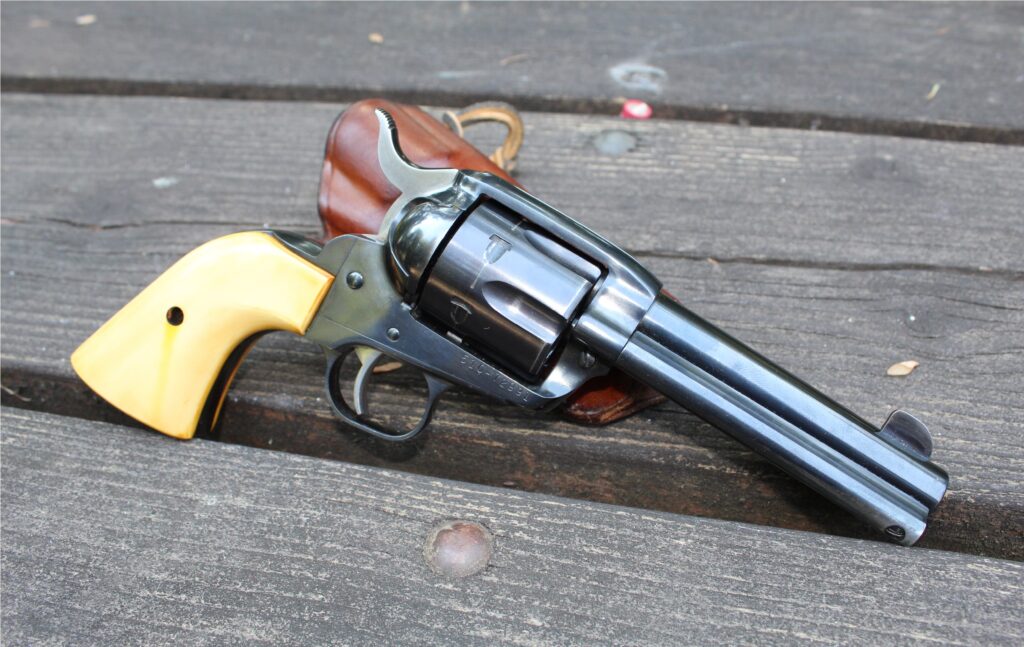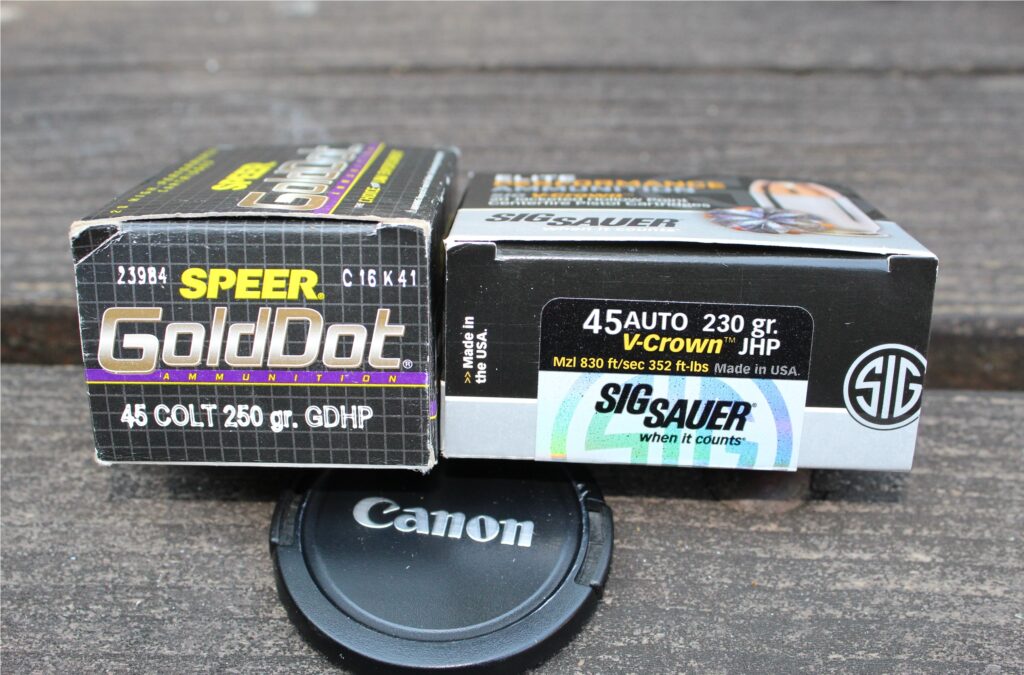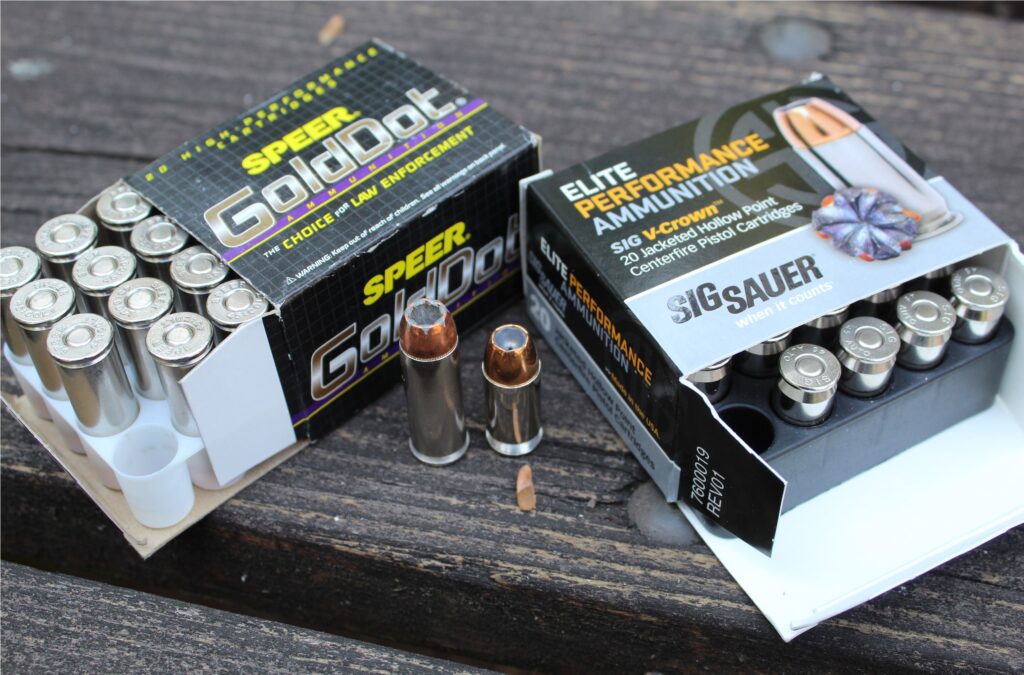
By Dave Workman | Editor-in-Chief
Years ago, a street cop friend of mine observed that nothing stops a fight like a “big, slow-moving piece of lead.”
We were discussing the merits of the .45-caliber bullet; not necessarily a particular cartridge, but the projectile, itself. If anything is likely to stop a fight, it’s a great big hole with some punch.
The .45 Colt dates back to 1872, and in the 150-plus year’s it’s been around, it has earned a reputation as an attention-getter, whether on the plains with the U.S. Cavalry, an empty lot next to Fly’s Photographic Studio in Tombstone, or dozens of other places here or in faraway lands.
General George Smith Patton carried an engraved, ivory-handled Colt Single-Action on his belt during WWII, and countless frontier lawmen, including the famed Texas Rangers, typically chose sixguns in that chambering.

Commonly loaded with a 250-grain lead bullet, the .45 Colt began life as a black powder cartridge and went smokeless in the 20th Century. It has always been a fairly accurate cartridge, and I’ve become rather fond of it, thanks to my acquisition a few years ago of a Ruger New Vaquero revolver. Using a 255-grain Hornady lead bullet ahead of a charge of Hodgdon’s HP38, I’ve found it can leave the muzzle at a respectable 850-900 fps out of a 7 ½- or 4 5/8-inch barrel.
Brass is easy to reload, and there is data available for use with cartridges intended only for such guns as the Ruger Blackhawk or a single-shot Thompson/Center pistol that is not recommended for traditional Colt SAA or similar handguns.
A few years ago, I was able to test and evaluate a Charter Arms revolver chambered for the big cartridge, and it was impressive. That five-shot wheelgun was well-made, reasonably accurate with fixed sights and not difficult to carry, which might surprise some people.

More than a century ago, the .45 ACP (for “Automatic Colt Pistol”) cartridge appeared, and it was an immediate success. Launching a 230-grain FMJ bullet at more than 800 fps, the .45 ACP was the choice of America’s military in two world wars and numerous other conflicts, and it became popular with law enforcement as well.
It’s also a fairly accurate cartridge, popular with competitive shooters, and it more than adequately meets the requirement of delivering a “big, slow-moving” bullet somewhere with definitive results. I knew an older gent in my youth who stopped a rather large black bear with a .45 Auto, putting an end to complaints about the bruin in an area surrounding a landfill. Over the years I’ve loaded 185-grain JHPs and 230-grain FMJs or plated lead bullets for the .45 ACP and found them all to be rather impressive on the gun range, capable of producing good groups.
Some years ago when a West Coast police department transitioned away from one double-action semi-auto to a choice of either a striker-fired sidearm or a single-action .45 ACP to be carried cocked-and-locked, I had the opportunity to train with them for a couple of days. Everyone in the class liked their .45—in this case a Kimber specimen with the 4-inch barrel—and they all shot rather well despite a few early misgivings about recoil that didn’t seem to materialize. I happened to take along a match-grade pistol built for me by the late Richard Niemer at Olympic Arms, and a couple of us spent about 30 minutes one afternoon shooting bowling pins suspended from a cross-beam via heavy cord, from a distance of about 50 yards.

While the .45 Colt has enjoyed revived popularity among the Cowboy Action shooters, it still remains a top defensive round, and with the right bullet-powder combination, it can be a decent game-stopper in the hunting field.
Meanwhile, the .45 ACP, whether chambered in any of the new striker-fired pistols or the reliable M1911, continues to be a favorite for armed private citizens, sheriff’s deputies and even some special ops folks.
Both the .45 Colt and .45 ACP have earned their places in American history and folklore. The cartridges, and the handguns that hold them, have become literally part of the nation’s fabric. Whether that’s good or bad, it is the plain, unvarnished truth.



